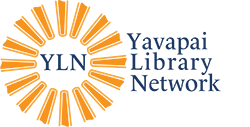Python for everybody : exploring data using Python 3
(E-Book, Online Content)
Author
Contributors
Open Textbook Library, distributor.
Published
[Place of publication not identified] : Charles Severance, 2009-.
Physical Desc
1 online resource : illustrations (some colour).
More Details
Published
[Place of publication not identified] : Charles Severance, 2009-.
Format
E-Book, Online Content
Language
English
Notes
Current Publication Frequency
Updated irregularly.
General Note
Includes index.
Description
"I never seemed to find the perfect data-oriented Python book for my course, so I set out to write just such a book. Luckily at a faculty meeting three weeks before I was about to start my new book from scratch over the holiday break, Dr. Atul Prakash showed me the Think Python book which he had used to teach his Python course that semester. It is a well-written Computer Science text with a focus on short, direct explanations and ease of learning. The overall book structure has been changed to get to doing data analysis problems as quickly as possible and have a series of running examples and exercises about data analysis from the very beginning. Chapters 2–10 are similar to the Think Python book, but there have been major changes. Number-oriented examples and exercises have been replaced with data- oriented exercises. Topics are presented in the order needed to build increasingly sophisticated data analysis solutions. Some topics like try and except are pulled forward and presented as part of the chapter on conditionals. Functions are given very light treatment until they are needed to handle program complexity rather than introduced as an early lesson in abstraction. Nearly all user-defined functions have been removed from the example code and exercises outside of Chapter 4. The word “recursion”1 does not appear in the book at all. In chapters 1 and 11–16, all of the material is brand new, focusing on real-world uses and simple examples of Python for data analysis including regular expressions for searching and parsing, automating tasks on your computer, retrieving data across the network, scraping web pages for data, object-oriented programming, using web services, parsing XML and JSON data, creating and using databases using Structured Query Language, and visualizing data. The ultimate goal of all of these changes is a shift from a Computer Science to an Informatics focus is to only include topics into a first technology class that can be useful even if one chooses not to become a professional programmer."--Open Textbook Library.
System Details
Mode of access: World Wide Web.
Description
Loading Description...
Also in this Series
Checking series information...
Copies
| Location | Format | Call Number | Status |
|---|---|---|---|
| Access online version | Online Content | Online | Available Online |
| Location | Format | Call Number | Status |
|---|---|---|---|
| Embry Riddle Aero University - EBOOK - EBook - Follow link or ask library staff for assistance | E-Book | QA76.73.P98S483 EB | Find It Now |
Subjects
LC Subjects
Reviews from GoodReads
Loading GoodReads Reviews.
Citations
APA Citation, 7th Edition (style guide)
Severance, C. R. (2009). Python for everybody: exploring data using Python 3 . Charles Severance.
Chicago / Turabian - Author Date Citation, 17th Edition (style guide)Severance, Charles R. 2009. Python for Everybody: Exploring Data Using Python 3. Charles Severance.
Chicago / Turabian - Humanities (Notes and Bibliography) Citation, 17th Edition (style guide)Severance, Charles R. Python for Everybody: Exploring Data Using Python 3 Charles Severance, 2009.
MLA Citation, 9th Edition (style guide)Severance, Charles R. Python for Everybody: Exploring Data Using Python 3 Charles Severance, 2009.
Note! Citations contain only title, author, edition, publisher, and year published. Citations should be used as a guideline and should be double checked for accuracy. Citation formats are based on standards as of August 2021.
Staff View
Loading Staff View.

